Nassau, the vibrant capital city of the Bahamas, is a treasure trove of history waiting to be discovered. From the commanding Fort Fincastle and the symbolic Queen’s Staircase to the captivating streets lined with colonial buildings, Nassau offers a tangible connection to its rich and diverse past.
Beyond the capital, the Out Islands reveal their own historical gems, from the iconic Elbow Reef Lighthouse to the evocative ruins of the Armbrister Plantation.
These top historical sites in the Bahamas offer an intimate and enlightening journey through time, honoring the past and shaping a deeper understanding of the nation’s story.
Nassau Historic Sites
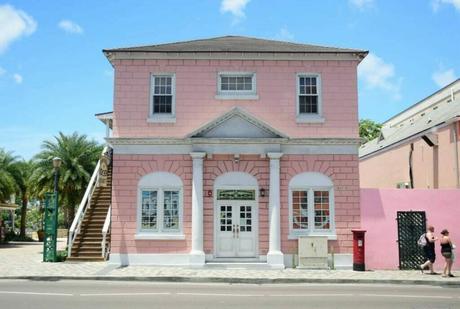
Nassau, the vibrant capital city of the Bahamas, is a treasure trove of history waiting to be discovered. The city’s story is embedded in its ancient buildings, forts, and streets – a testament to its rich and diverse past.
Exploring Fort Fincastle
Fort Fincastle, perched on Bennett’s Hill, is a historic fort in Nassau offering panoramic views of the city and the Caribbean Sea. Built in 1793, its unique paddle-wheel steamer shape adds to its allure. Once a defense against pirates, the fort now welcomes visitors to delve into Nassau’s past and appreciate its strategic significance.
The Majesty of the Queen’s Staircase
The Queen’s Staircase, also known as the 66 steps, is an architectural marvel carved out of limestone by slaves in the late 18th century. It represents Queen Victoria’s reign and her role in abolishing slavery. Ascending these steps provides a tangible connection to the Bahamas’ historical journey and stands as a symbol of resilience.
Exploring Nassau’s Historic Streets
Nassau’s historic streets, including Bay Street, offer a captivating glimpse into the city’s past with colorful colonial buildings and charming lanes. Government House, a regal mansion and the Governor General’s residence, showcases colonial architecture. Discover the vibrant local culture through quaint shops, lively cafes, and vibrant markets as you wander through Nassau’s historic streets.
Reviving History at Fort Charlotte
Fort Charlotte, named after Queen Charlotte, offers an immersive experience into Nassau’s past with its imposing structure and underground passageways. Built during the late 18th century, it showcases military history and colonial architecture. Witness captivating reenactments and explore the fort’s strategic location for a deeper understanding of Nassau’s heritage.
The Legacy of Pompey Museum
The Pompey Museum on Bay Street pays tribute to the struggles and triumphs of the African diaspora in the Bahamas. Housed in a former marketplace where enslaved Africans were traded, the museum tells the story of slavery, emancipation, and the ongoing quest for social justice through exhibits and artwork. Reflect on the collective history of the Bahamas and the enduring legacy of the African diaspora at this thought-provoking museum.
Preserving Heritage at Government House
Government House, located on Mount Fitzwilliam, is a grand mansion serving as the official residence of the Governor General. Its colonial architecture and manicured gardens offer a glimpse into the country’s governance and history. Explore the regal atmosphere, guided tours, and immerse yourself in the rich heritage preserved within the walls of this stately residence.
Historical Sites on Grand Bahama
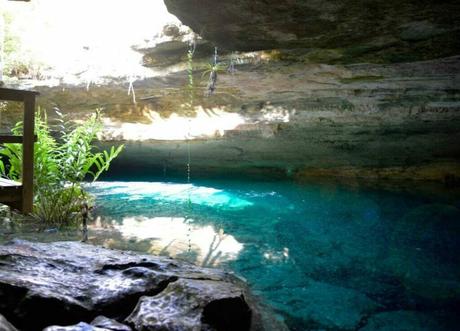
Grand Bahama, the northernmost island of the Bahamas, boasts a plethora of sites that echo the past. The island’s history, entwined with tales of pirates, smugglers, and colonizers, is nothing short of fascinating.
Exploring Rand Nature Centre and “The Manor”
Located in Freeport, Grand Bahama, the Rand Nature Centre offers both natural beauty and historical significance. The center’s historic building, known as “The Manor,” provides insights into the island’s colonial era. Visitors can explore the exhibition of Lucayan artifacts, gaining a deeper understanding of the lives and culture of Grand Bahama’s first inhabitants.
Discovering Ben’s Cave in Lucayan National Park
A must-visit site on Grand Bahama is Ben’s Cave, nestled within the Lucayan National Park. This extensive underwater cave system served as a vital freshwater resource for the indigenous Lucayan people. Today, the caves stand as a testament to the island’s natural and historical heritage, with their serene atmosphere and captivating geological formations captivating visitors.
Uncovering Heritage at the Holmes’ Rock Railway Station
Holmes’ Rock Railway Station is a historic site that offers a glimpse into Grand Bahama’s transportation history. Built in the early 20th century, this quaint railway station served as a vital link between Freeport and other settlements on the island. Today, the station stands as a testament to the island’s past, with its well-preserved architecture and artifacts showcasing the significance of rail transportation during that era. Exploring the station allows visitors to step back in time and imagine the bustling activity that once took place within its walls.
Immersing in History at the Perfume Factory Museum
The Perfume Factory Museum in Freeport offers a unique opportunity to delve into the island’s aromatic past. Housed in a charming colonial-style building, the museum showcases the history of perfume production in Grand Bahama. Visitors can learn about the extraction of fragrances from local flowers and plants and the process of creating signature scents. With informative exhibits and interactive displays, the Perfume Factory Museum offers a sensory journey through the island’s perfumery heritage, providing visitors a delightful and educational experience.
Exploring the Peterson Cay National Park
Peterson Cay National Park, located just off the southern coast of Grand Bahama, is a stunning natural attraction and holds historical significance. The park encompasses a small uninhabited cay surrounded by crystal-clear turquoise waters and vibrant coral reefs. The cay itself served as a lookout point for pirates and smugglers during the colonial era. Today, visitors can explore the park’s walking trails, snorkel in the surrounding waters, and marvel at the remnants of the island’s past, making it a unique blend of natural beauty and historical intrigue.
Unveiling the Past at the Grand Bahama Museum
To comprehensively understand Grand Bahama’s history and culture, a visit to the Grand Bahama Museum is a must. Located in downtown Freeport, this museum offers a rich collection of artifacts, photographs, and exhibits that chronicle the island’s past. From the Lucayan Indians to the colonial era and the development of Freeport as a major tourist destination, the museum provides a captivating journey through the island’s heritage. Gain insights into the island’s diverse cultural influences, traditional industries, and notable historical events as you explore the engaging displays and informative presentations at the Grand Bahama Museum.
Sites on Out Islands
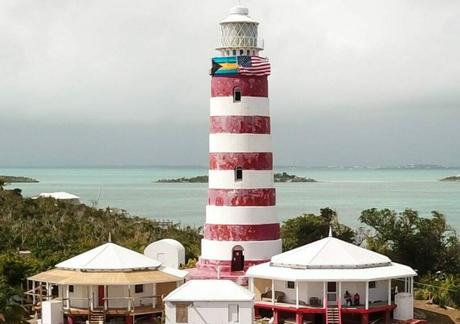
Beyond the popular tourist destinations of Nassau and Grand Bahama, the Out Islands (also known as the Family Islands) are sprinkled with historical gems. These lesser-known islands hold an unadulterated version of Bahamian history.
Guiding Ships at Elbow Reef Lighthouse in Hope Town
Hope Town in the Abacos Islands is home to the iconic Elbow Reef Lighthouse, a must-visit historical site. Constructed in 1864, this candy-striped lighthouse stands as one of the last manual lighthouses in the world. Its storied walls bear witness to the region’s maritime history, with tales of shipwrecks and the vital role it played in guiding vessels through treacherous waters. Climb to the top for panoramic views and immerse yourself in the rich seafaring heritage preserved within this timeless beacon.
Exploring the Armbrister Plantation Ruins on Cat Island
Cat Island offers a glimpse into the era of slavery and cotton plantations through the ruins of the Armbrister Plantation. Dating back to the early 19th century, these evocative remains paint a picture of the island’s historical past. Discover the remnants of the plantation’s structures and imagine the labor and hardships endured during that time. The nearby Armbrister Creek, intertwined with the plantation’s history, further enhances the narrative, inviting visitors to reflect on the island’s complex heritage.
Unveiling History at the Hermitage on Eleuthera
The Hermitage, located on Eleuthera, is a historical and spiritual site of great significance. Perched atop Mount Alvernia, the highest point in the Bahamas, stands a stone monastery constructed by hand by Father Jerome, a Franciscan friar, in the 1940s. This serene retreat offers stunning views of the island and serves as a testament to the dedication and perseverance of its creator. Explore the charming chapel, stroll through the peaceful gardens, and appreciate the tranquility that envelops this unique site, which holds both historical and spiritual significance.
Tracing the Past at Preacher’s Cave in Eleuthera
Preacher’s Cave, situated in Eleuthera, is a poignant historical site that played a vital role in the island’s religious history. It served as a refuge for the Eleutheran Adventurers, a group of settlers seeking religious freedom in the 17th century. Explore the natural limestone cave and discover the rock formations that once provided shelter and solace for these early settlers. As you stand within the cave’s walls, imagine the struggles and triumphs of those who sought a new beginning in this far-flung corner of the world.
Discovering the Salt Industry Heritage on Inagua
Inagua, the southernmost island of the Bahamas, boasts a rich history tied to the salt industry. Visit the Morton Salt Company, one of the largest salt production facilities in the world, to gain insight into the island’s salt mining heritage. Learn about the traditional methods used to extract salt and the island’s important role in the global salt industry. Immerse yourself in the fascinating process of salt production, witness the vast salt pans, and appreciate the legacy left behind by generations of salt workers on this remote and intriguing Out Island.
Slavery Heritage Sites
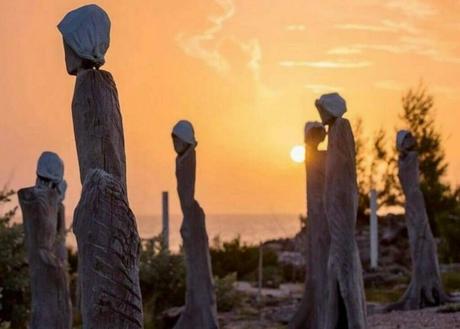
The slavery heritage sites in the Bahamas serve as solemn reminders of a time when human life was traded as a commodity. The islands were once a part of the Transatlantic Slave Trade, and these sites bear witness to that dark chapter.
Reflecting on the African Slave Memorial in Bimini
Bimini Island is home to the African Slave Memorial, a significant site often referred to as the Bimini Road. This underwater rock formation sparks intrigue and speculation, with some suggesting it is evidence of an ancient civilization, while others associate it with the potential escape route for slaves seeking freedom. Regardless of its origin, the memorial serves as a poignant symbol of the arduous journey from enslavement to liberation, inviting contemplation on the resilience and strength of those who sought freedom amidst adversity.
Honoring the Legacy at Clifton Heritage National Park
Located in Nassau, the Clifton Heritage National Park encompasses the remnants of a former plantation, including the preserved slave quarters. These humble structures stand as enduring symbols of the harsh conditions endured by enslaved individuals during a tragic era. As visitors explore the park, they embark on a powerful journey through time, paying homage to the resilience and courage of those who suffered under the institution of slavery. The park offers a space for reflection, education, and remembrance, ensuring that the legacy of those who endured slavery is never forgotten.
Promoting Healing and Understanding at the Pompey Museum of Slavery and Emancipation
The Pompey Museum of Slavery and Emancipation, located in Nassau, stands as a testament to the enduring legacy of slavery in the Bahamas. Housed in a former marketplace where enslaved Africans were once bought and sold, the museum serves as a place of reflection, education, and healing. Through thought-provoking exhibits, artifacts, and artwork, the museum tells the harrowing story of slavery while highlighting the indomitable spirit and resilience of those who fought for freedom. By engaging with the exhibits and learning about the struggles and triumphs of the enslaved, visitors can gain a deeper understanding of the Bahamas’ history and contribute to the ongoing journey of healing and understanding.
Tracing the Roots at the Little House of Deliverance
On the island of Long Island, the Little House of Deliverance offers a glimpse into the religious and cultural practices that emerged among the descendants of enslaved Africans. This humble church, founded in the early 20th century, stands as a testament to the resilience and strength of the community. Visitors can attend services, witness the vibrant worship, and gain insight into the spiritual traditions that provided solace and hope in the face of adversity. The Little House of Deliverance represents a unique aspect of the Bahamas’ slavery heritage, showcasing the enduring legacy of faith and community among the descendants of those who were once enslaved.
Remembering the Past at the Hermitage Plantation on Exuma
The Hermitage Plantation on Exuma Island bears witness to the era of slavery and the plantation economy that dominated the Bahamas. Visitors can explore the ruins of the plantation, which include remnants of the slave quarters and other structures. Walking through the site, one can envision the hardships endured by the enslaved people who toiled on the land. The ruins serve as a solemn reminder of the inhumanity of slavery and encourage reflection on the journey towards freedom and justice.
Bahamas Historical Sites FAQ
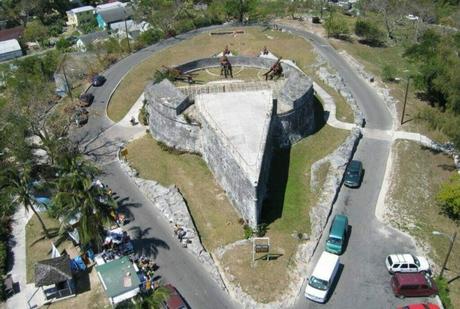
What are two historical sites in the Bahamas?
Two prominent historical sites in the Bahamas are Fort Fincastle and the Pompey Museum of Slavery and Emancipation. Fort Fincastle, constructed in 1793, played a pivotal role in defending Nassau from pirates and offers panoramic views of the city and the Caribbean Sea. The Pompey Museum, housed in a former slave marketplace, showcases the struggles and triumphs of the African diaspora, providing a poignant tribute to the legacy of slavery in the Bahamas.
What is a historical site in the Bahamas?
A historical site in the Bahamas is a location that holds significant cultural, architectural, or archaeological value, providing insights into the country’s past. These sites often include forts, museums, plantations, and other structures that bear witness to key events and periods in the Bahamas’ history. They serve as important educational resources, preserving and sharing the stories, artifacts, and experiences that shaped the nation’s development.
What are the major historical events in the Bahamas?
The Bahamas has experienced several major historical events that have shaped its trajectory. These include the arrival of the Lucayan people, colonization by the Spanish, British control, the abolition of slavery, the impact of piracy, the development of the plantation economy, and the struggle for independence. Notable events also encompass the Transatlantic Slave Trade, the American Revolutionary War, the British occupation during the American Civil War, and the impact of World War II. Each of these events has left a lasting imprint on the Bahamas’ cultural, social, and political landscape.

